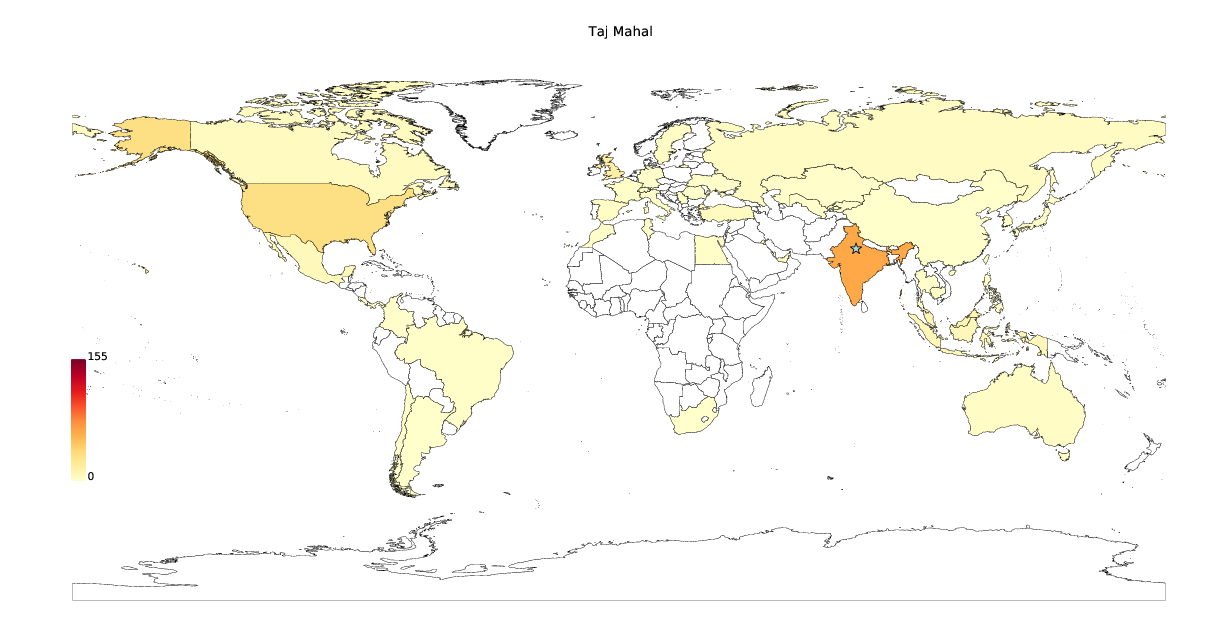 Studying real time human mobility triggered by social events through on-line networks
Studying real time human mobility triggered by social events through on-line networks
Touristic site attractiveness seen through Twitter
Measuring site attractiveness using geolocated tweets
Tourism is becoming a significant contributor to medium and long range travels in an increasingly globalized world. Leisure traveling has an important impact on the local and global economy as well as on the environment. The study of touristic trips is thus raising a considerable interest.
In this work, we apply a method to assess the attractiveness of 20 of the most popular touristic sites worldwide using geolocated tweets as a proxy for human mobility.
We first rank the touristic sites based on the spatial distribution of the visitors’ place of residence. The Taj Mahal, the Pisa Tower and the Eiffel Tower appear consistently in the top 5 in these rankings. We then pass to a coarser scale and classify the travelers by country of residence. Touristic site’s visiting figures are then studied by country of residence showing that the Eiffel Tower, Times Square and the London Tower welcome the majority of the visitors of each country. Finally, we build a network linking sites whenever a user has been detected in more than one site. This allow us to unveil relations between touristic sites and find which ones are more tightly interconnected.
The following pictures represent by means of colours the origin of Taj Mahal and Grand Canyon visitors. Most common places are red painted and less common places yellow painted.
Taj Mahal visitors
Grand Canyon visitors.
Next graphics show a ranking between popular touristic sites acording to three different criteria.
First and second graphics stablish a classification through the mean distance travelled by visitors
and the total area covered by the users places of residence, while the third
graph considers the number of countries of origin.






